Solana announced a new roadmap last week.
Essentially, because the improvements of each chain have entered the deep water area, there is indeed a situation of piling up nouns. We will try to interpret Solana's new roadmap in a way that everyone can understand + our own analysis.
First of all, Solana has undergone a major narrative change in 2024. Solana's goal has become to build an "internet capital market", while before, Solana's goal was to build a high-performance blockchain.
Internet capital market, as the name suggests, aims to create a borderless, 24/7 financial market where various assets - such as stocks, bonds, currencies, and real-world assets (RWAs) - are tokenized and traded seamlessly on the chain.
This thing is equivalent to a general outline, so in order to achieve this general outline, task decomposition is required.
And this Solana roadmap, specifically the technology department's roadmap, wants to help the concept of "internet capital market" land, so you can't see the efforts of Solana's business and compliance departments.
You can understand it as Solana's technical roadmap.
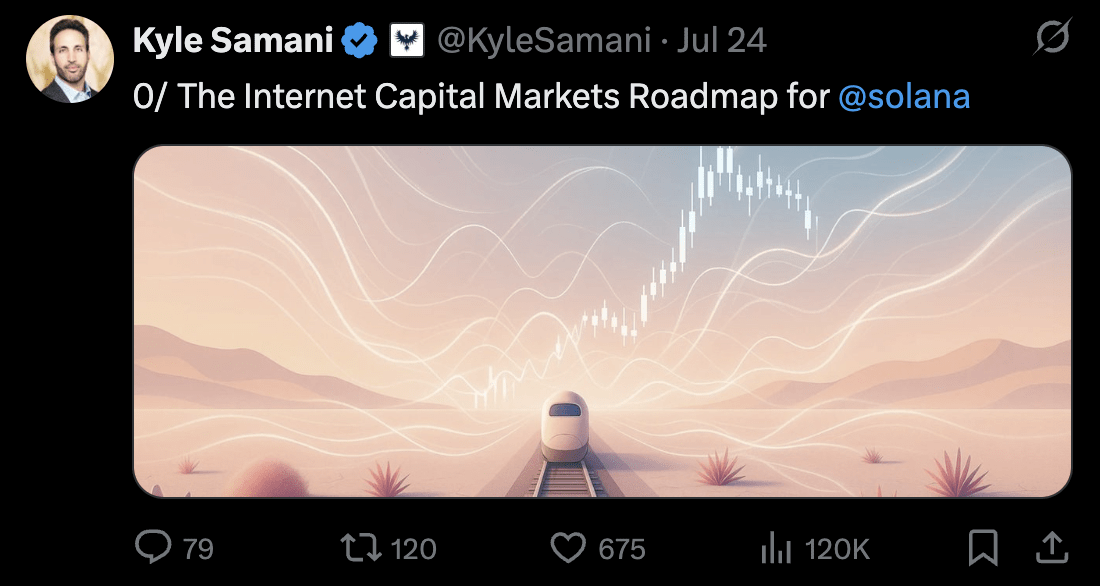
And the Solana technology team is not only the core developers of Solana Labs, but also several important roles, such as:
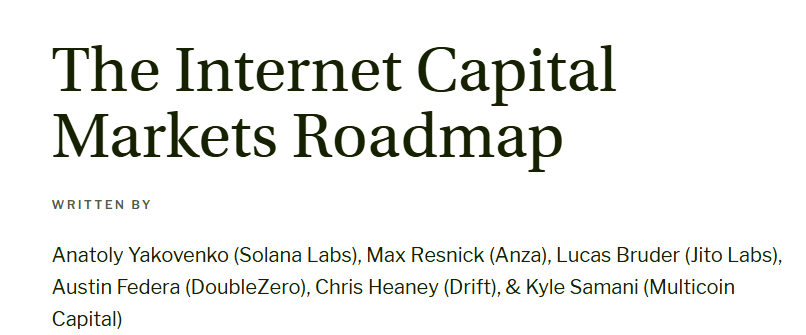
1. Anza, big brother level. This is a low-key Solana development company founded by former Solana Labs team members. We believe its role is similar to the relationship between ConsenSys/Ethereum or Blockstream/Bitcoin.
2. Jito, second brother level. This is the Solana version of Lido, but it has more power than Lido because Jito also controls almost all MEV in Solana.
3. Multicoin, this one is at least the third brother level. Although it belongs to capital, because it holds a lot of SOL and SOL ecosystem projects, it can definitely have a say in the technical field.
4. DoubleZero, this belongs to the junior level, focusing on speeding up the network.
5. Drift, also considered a junior level, is a perpetual contract, but it also participates in the development of some Solana functions.
The official Solana Labs plus these three King Kongs and two small generals formed the six-member team of this roadmap, which is actually equivalent to the real Solana technology reform committee.
---separator line---
Next, let's see what efforts Solana's technology department needs to make to achieve the [internet capital market]?
The internet capital market is a slogan-like thing because it doesn't say how everyone should do it.
So, in order to facilitate developers to "work in one direction", the technical department translated the entire slogan into technical language, which is "Application-Controlled Execution (ACE)".
Here it starts to get difficult. What exactly is this awkward Application-Controlled Execution (ACE)?
Solana believes that an internet financial market (especially comparable to Web2) must meet one condition, that is, financial applications must have [millisecond-level control over the sorting of their own transactions].
Note: You need sorting rights, millisecond-level, and control.
Therefore, in order to achieve Application-Controlled Execution (ACE), Solana's technology still lacks many things. What exactly is missing? Please see the roadmap:
Short-term goals (1-3 months): be more friendly to order books, suppress malicious MEV bots, and reduce transaction latency.
Medium-term goals (3-9 months): reduce latency through dedicated fiber optic networks; greatly modify the Solana consensus algorithm to greatly shorten the final transaction confirmation time; reduce transaction latency.
Long-term goal (9-30 months): To change the Solana consensus algorithm from a single leader to multiple leaders to increase the system's resistance to extreme risks, censorship resistance, and give applications greater sorting power.
---separator line---
Next, let's talk about how to achieve the short, medium, and long-term goals?
Short-term goals (1-3 months): be more friendly to order books, suppress malicious MEV bots, and reduce transaction latency.
The person in charge is Jito and Anza.
First is the order book. Solana loves order books so much. Remember that in the SBF era, Solana wanted to promote the order book model DEX. Today, Jito and Drift are developing a tool called BAM, which is a new way to build transactions. Details will not be expanded here.
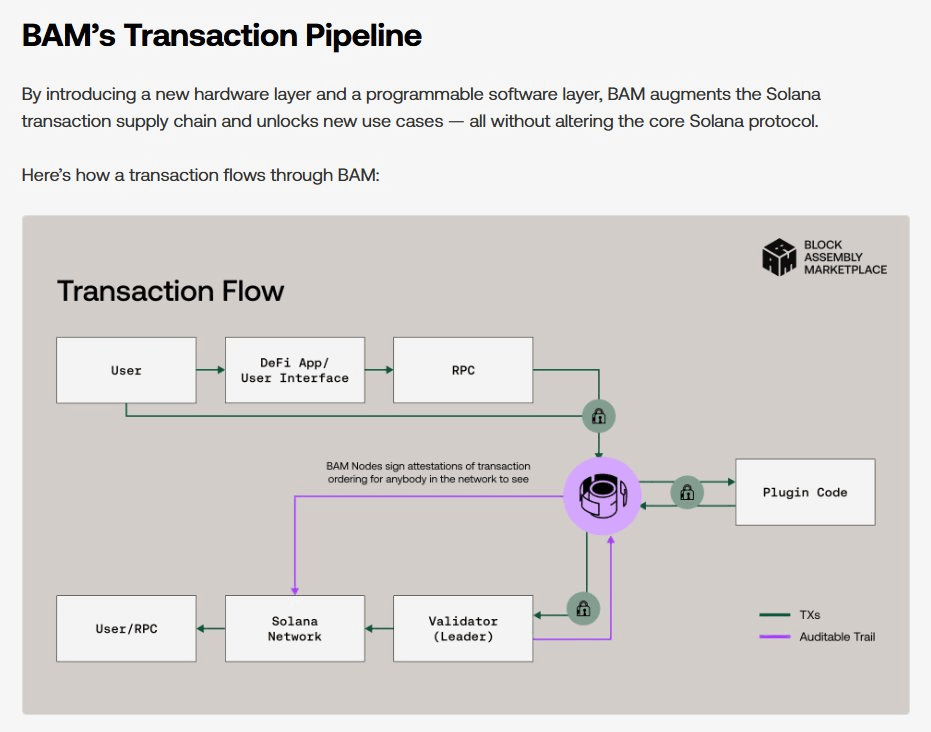
Here, but you only need to know that through this method, the order book can be played more smoothly without relying on traditional DEX models similar to Uniswap. In the future, an order book comparable to CEX can be made. After all, how can a chain be an internet financial market without an order book?
Suppressing malicious MEV bots is also Jito's routine. Of course, this is also part of further strengthening Jito's power. All blocks must go through Jito and the entire BAM to be built, which is equivalent to the Grand Secretaries of the Ming Dynasty.
Anza contributed a new TPU client to reduce transaction sending latency.
---separator line---
Medium-term goals (3-9 months): reduce latency through dedicated fiber optic networks; greatly modify the Solana consensus algorithm to greatly shorten the final transaction confirmation time; reduce transaction latency.
The person in charge is: DoubleZero and Anza.
Because everyone knows that the main cause of Solana node freezes is insufficient bandwidth. And the DoubleZero project mentioned earlier hopes to increase the bandwidth available to ordinary Solana validators by multiple times by establishing a dedicated fiber optic network.
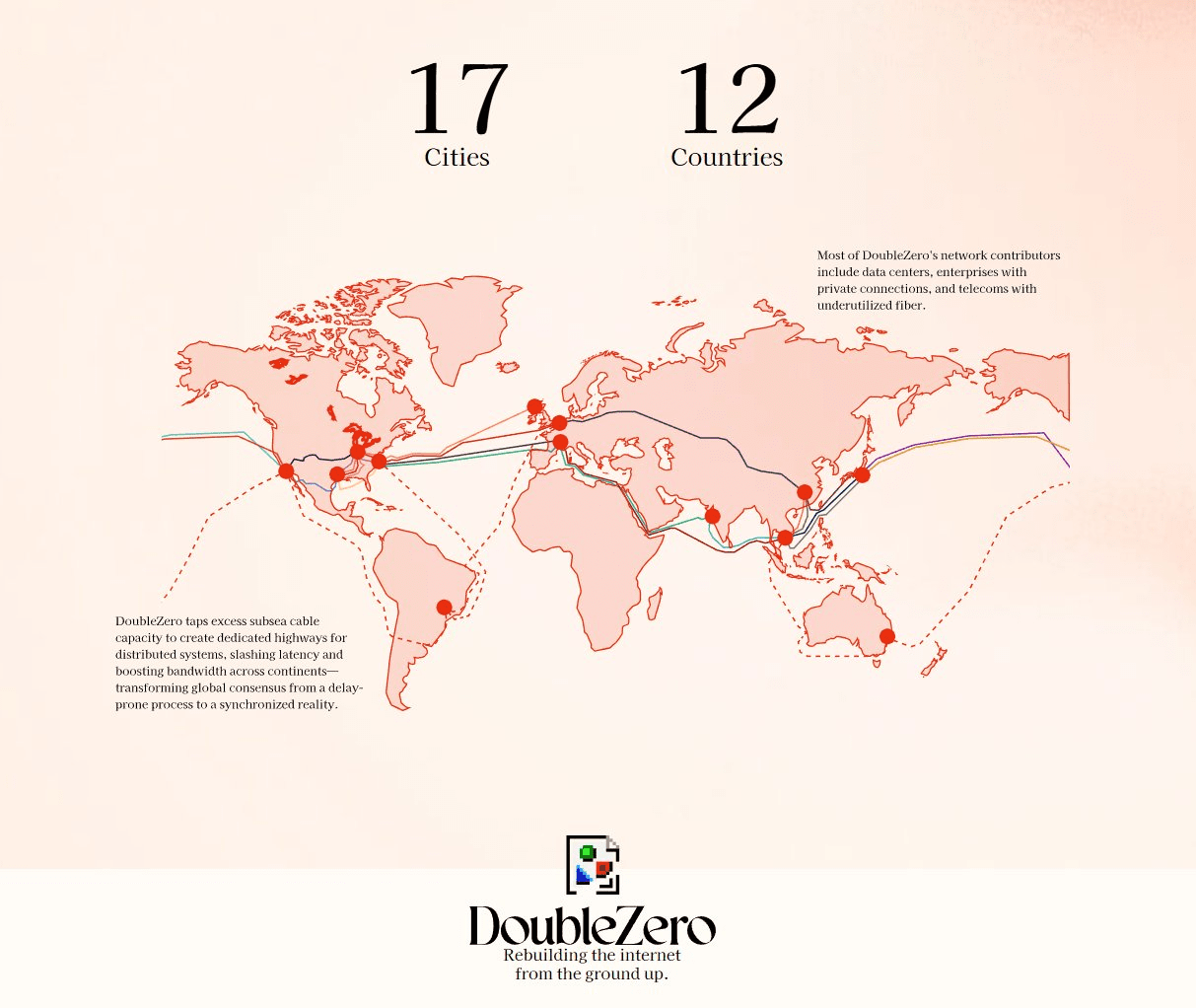
Of course, DoubleZero is not the only one focusing on dealing with bandwidth issues, there are also protocols like Optimum. However, DoubleZero sells hardware in essence, and Optimum sells better algorithms in essence.
In addition, we should focus on the Solana consensus algorithm, but due to limited space, I will keep it short.
Solana's consensus algorithm, as everyone knows, is Proof of History (PoH) + Tower BFT.
The essence of this consensus is to first create an internal clock through Proof of History, and then select a leader each time according to time. The leader is responsible for producing blocks, and other nodes are only responsible for voting, which is the so-called single-leader system.
The advantage of a single leader is speed, the disadvantage is singleness, so Solana has also crashed several times.
I believe everyone who has worked in a company knows the difference in efficiency between having one leader and having a group of leaders. There is no need to expand on this here.
Of course, Solana itself believes that the main contradiction of the single-leader system now is that the final confirmation time is not fast enough.
Now Solana's final confirmation takes 12.8 seconds, while Solana's competitors, such as Sui, only take 0.5 seconds.
The so-called final confirmation has been mentioned many times before. Before the final confirmation, the blockchain *theoretically* has the possibility of rolling back; after the final confirmation, no one can change it, which is the immutability of the blockchain.
A more intuitive example is the time you wait for several blocks to be credited when you deposit into an exchange, which is the exchange's defense against blockchain rollback.
Although in 99.9% of cases, the blockchain will not fail due to insufficient final confirmation time, there have been such cases in history, such as someone using ETC or BTC fork coins to trick exchanges.
But remember, Solana wants to build an internet capital market - the financial market has very, very high requirements for final confirmation, and cannot tolerate any sand in its eyes, so 12.8 seconds is not enough, so Solana is determined to develop a new consensus mechanism.
You should know that the consensus mechanism is the foundation of a blockchain, its soul. And this important development task is entrusted to Anza, so now you know why we call Anza the big brother of Solana's technology team.
Although Anza is not officially affiliated, it is definitely a regular army.

Solana's new consensus mechanism is called Alpenglow, meaning "the glow of the Alps", symbolizing the Swiss origin of the protocol.
This Alps consensus mechanism can be summarized in three characteristics:
(1) Final confirmation reduced to 150 milliseconds (killing competitors 3x)
(2) No more voting (off-chain signature, saving money for small nodes)
(3) More elegant (eliminate technical debt, prepare for multiple leaders)
Under the Alps new consensus, it is still a single leader, but:
1. Propagation layer: The introduction of relay nodes to help forward transactions greatly reduces latency.
2. Voting layer: Although the fault tolerance is reduced from 33% to 20%, the security sacrifice is small, but the final confirmation time is greatly shortened. In addition, cryptography is used to ensure that voting is done off-chain.
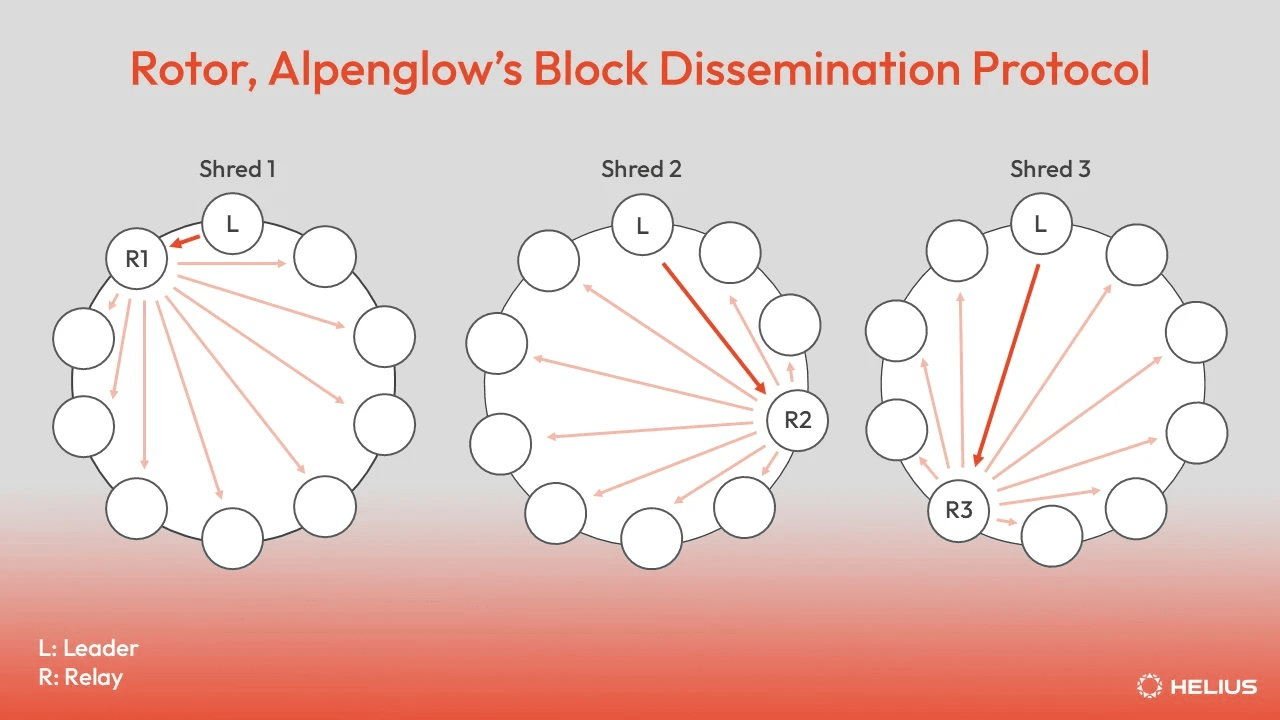
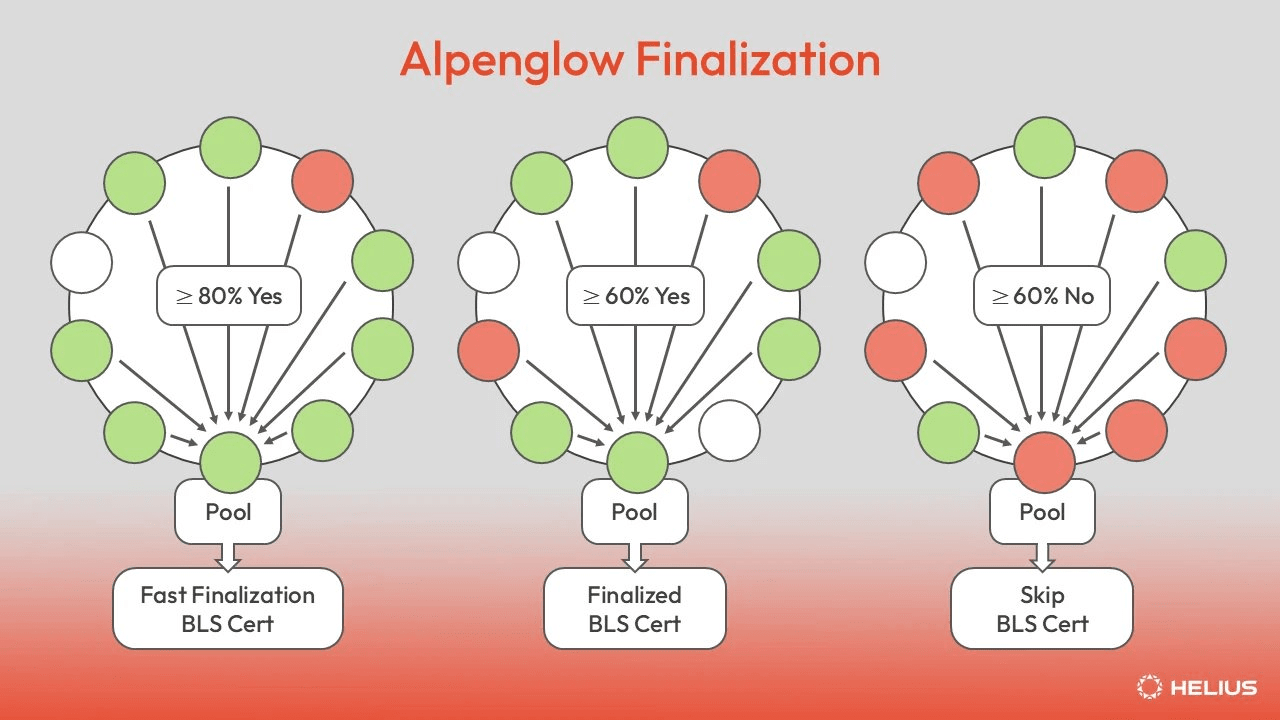
In this way, the final confirmation time is successfully shortened to 150 milliseconds.
---separator line---
Finally, the long-term goal (9-30 months): to change the Solana consensus algorithm from a single leader to multiple leaders to increase the system's resistance to extreme risks, censorship resistance, and give applications greater sorting power.
This is also easy to understand, because the goal is to build a free "internet capital market", so it assumes the worst-case scenario.
What are the worst-case scenarios? For example, a single leader wants to censor transactions, or a single leader wants to sort transactions (instead of letting the application sort itself).
Why is Solana so persistent in letting financial applications sort themselves? Let me give you an example, and you will understand.
Suppose you are now using a brokerage to speculate in stocks, but China Telecom is using the advantages of network base stations to intercept your transactions every day, can you stand it? Right.
MEV is actually very unreasonable, but everyone is used to it. How can the power of the chain and nodes override the application?
Therefore, in order to avoid this worst-case scenario, Solana must introduce a multi-leader mode in the future. In this way, if a leader node does evil, including but not limited to, censoring transactions such as addresses sanctioned by the United States; sorting transactions such as personally doing bots, other leaders must be able to come out and counteract it.
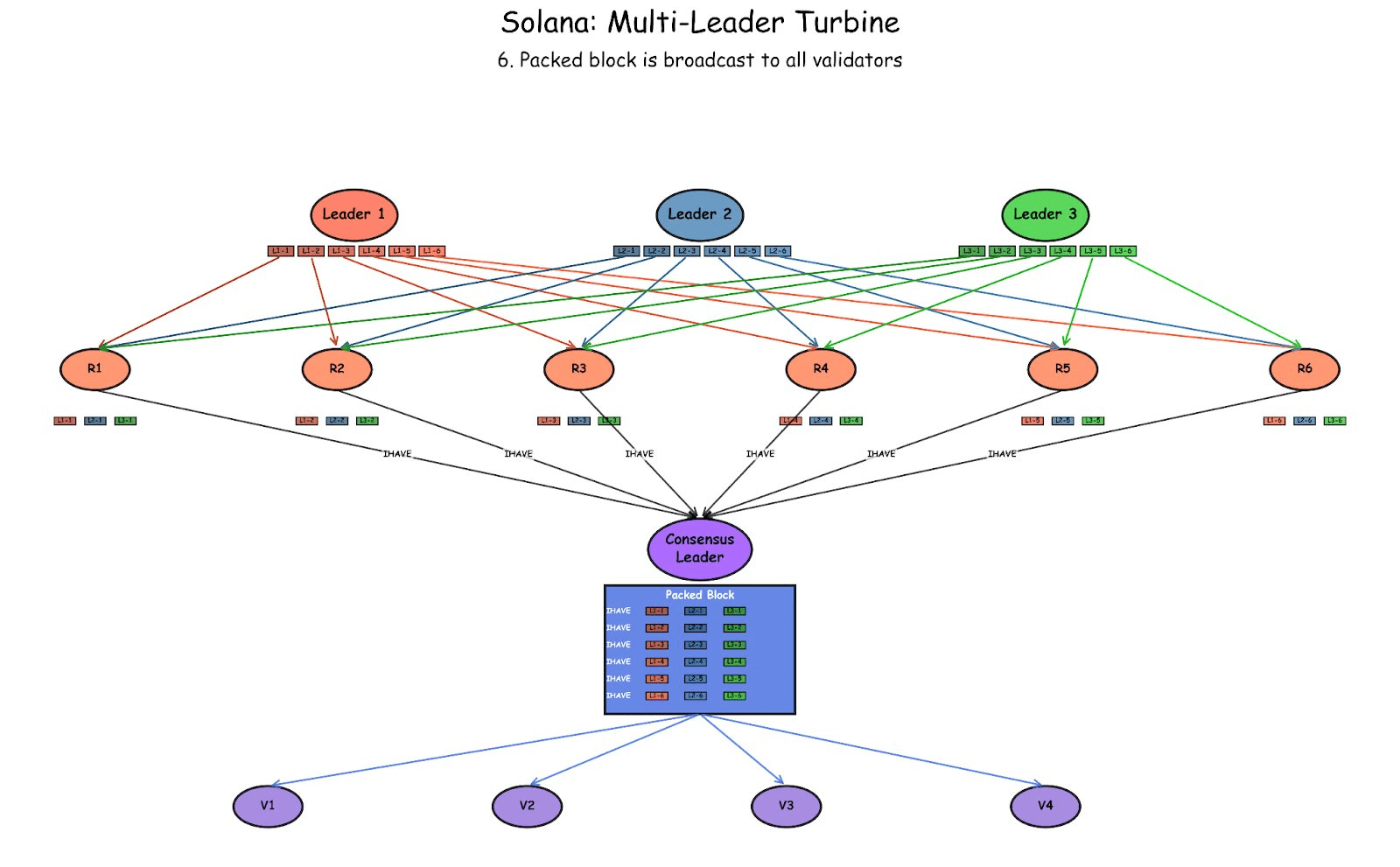
This section is relatively short because there is no clear path to achieve it yet, and it is still in the ideal situation of discussion.
So, you see that the goals of this short-medium-long-term technology team, from the simplest how to sort blocks, to the later complex consensus mechanism improvement, to the final addition of the extremely difficult multi-leader mode, are essentially gradual, all to serve this ultimate goal of "internet capital market".
Finally, although Solana's technical roadmap has a large number of jargon abbreviations and terms piled up, after analysis, its technical route is undoubtedly effective and feasible, and we also look forward to the day when real traditional financial applications take root in Solana!
This content is jointly released by Nothing Research, Ebunker, and Ourbit.

